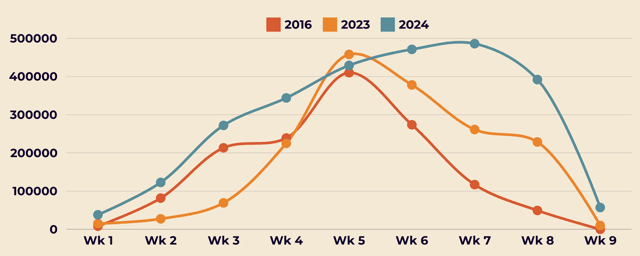
Hey all!
On Wednesday the 17th we saw 0 sandhill cranes between Overton and Chapman, NE. This is a 100% decrease from last week with our 57,000 on the 8th. However, I have gotten reports of a few stragglers still in the area (it is much easier to spot 1000s of cranes compared to 5). Some of these birds are likely sick or injured and could not continue their migration.
This year we had a gradual climb to peak numbers in week 7, March 28th, with 486,000 sandhill cranes. This means a third of the world’s population of sandhill cranes was in the Central Platte River Valley at one time. This equates to a sixth of the world’s crane population in one place at one time and this doesn’t even include the 10s of thousands of sandhill cranes that migrate through the North Platte River Valley or the record number of whooping cranes using the Platte as a stopover this spring!
Over 175 whooping cranes used the Platte River this Spring! That is equal to at least 20% of the world’s most rare crane species relied on the Platte River and the surrounding habitat. This points to the importance of the continued protection and restoration of this “flyover country,” as it, in the most literal way, is actually critical “stopover country” for these unique birds.
So how does this year compare to years past? At the start of the season, we noticed this year’s numbers were following a similar pattern to 2016. Well… after the first few weeks that pattern quickly faded. Even comparing this year to last year shows dramatically different activity. This points to the exact reason why we never give certain answers when asked to predict the up coming weeks or months. Each year is very different. Over the past few decades of collecting crane data, we are able to connect environmental conditions to crane migration behavior, but even then, the environment and weather is fairly unpredictable, at least with resources available to us.
This brings our crane season officially to a close. We have had sandhill cranes on the Central Platte since October 20th 2023, so we are both saddened and relieved to see them fly off to where they are likely to thrive best during their breeding season. We will be ready and waiting to see the newest generation come through next season!
Till next time,
Bethany